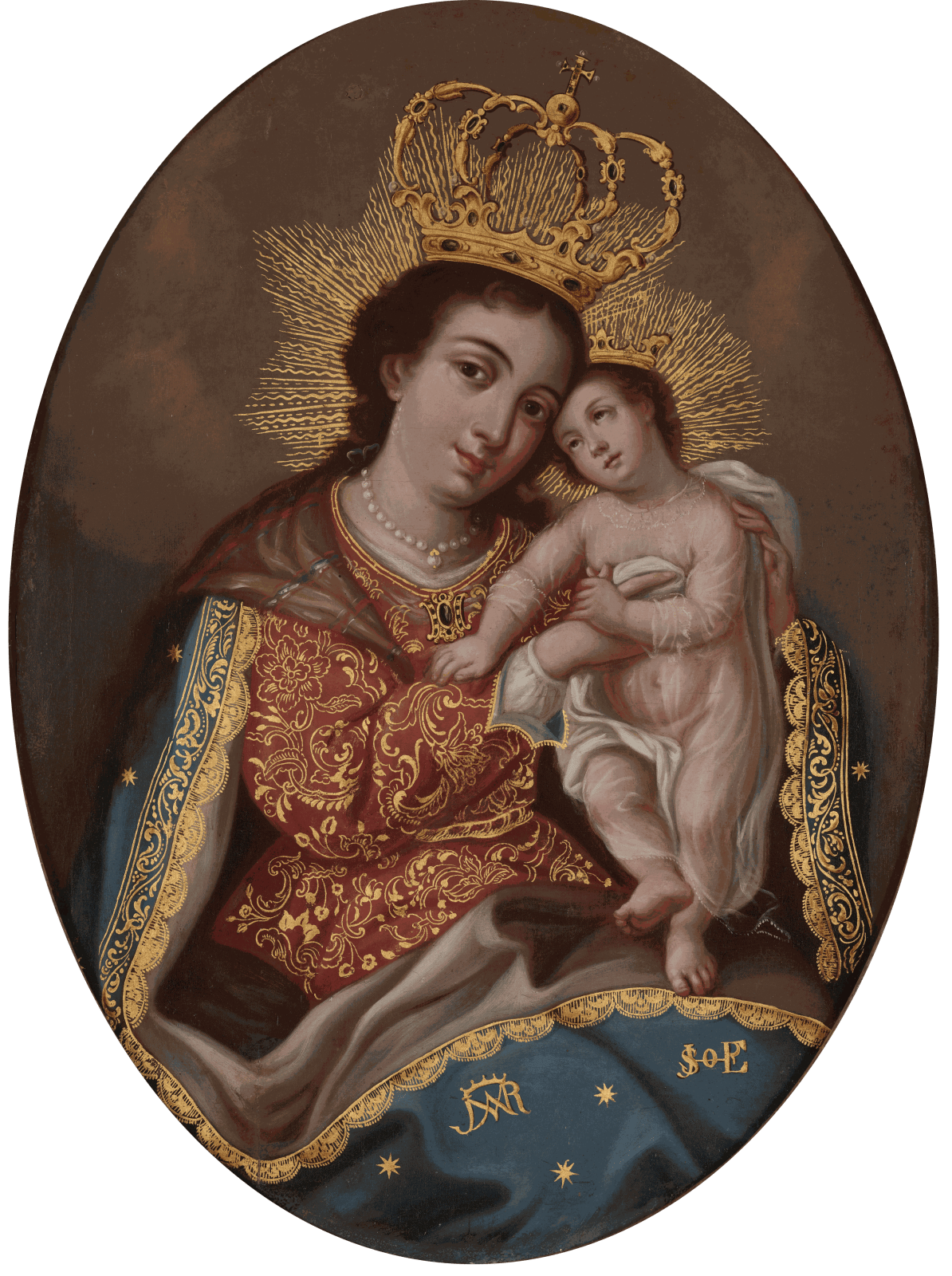LUIS BERRUECOOUR LADY OF REFUGE
Provenance
Miguela Family Collection, Spain
Active in Puebla during the first half of the 18th century, Luis 1 Berrueco was the most prominent painter of a group that included five others sharing the same surname, and which formed a family dynasty. We also know that he learnt his trade under the guidance of Juan Correa, the latter therefore being one of his benchmark figures. With regard to Berrueco's artistic output, it is worth highlighting the fact that he was one of the first artists to develop the Castas painting genre” (Fig. 1). His career was largely linked to the aforementioned city of Puebla, although his work was also popular in Atlixco, Tlaxcala, Aguascalientes, San Luis Potosí and Querétaro, due to his close connections with the Jesuit and Franciscan Orders, from which he received numerous commissions. Large part of his work is currently scattered between various institutions, such as the Museo de la Universidad Autónoma in Puebla, the Museo de Chapultepec in Mexico City, the Museo Regional in Querétaro, and Madrid's Museo de América.



